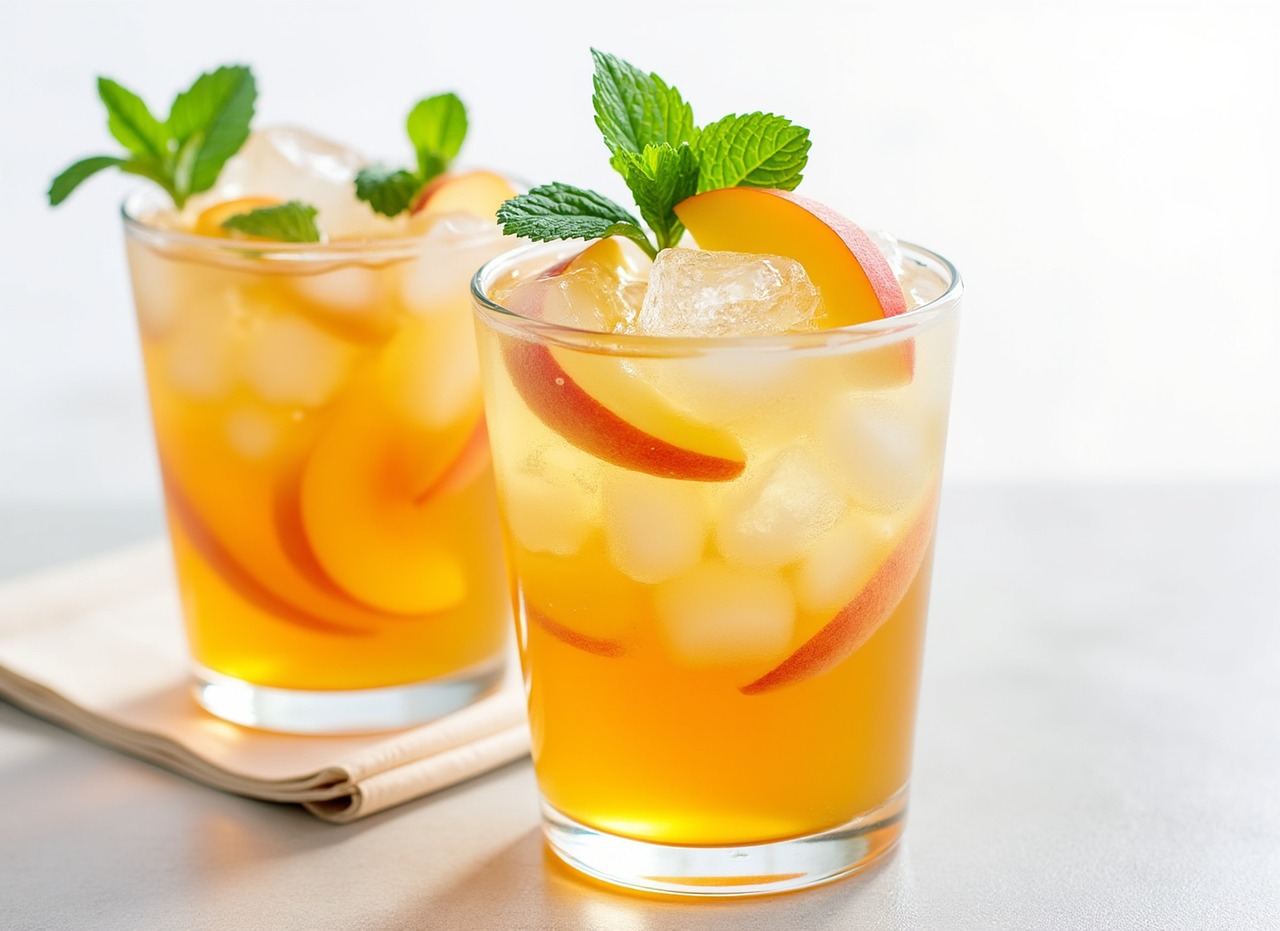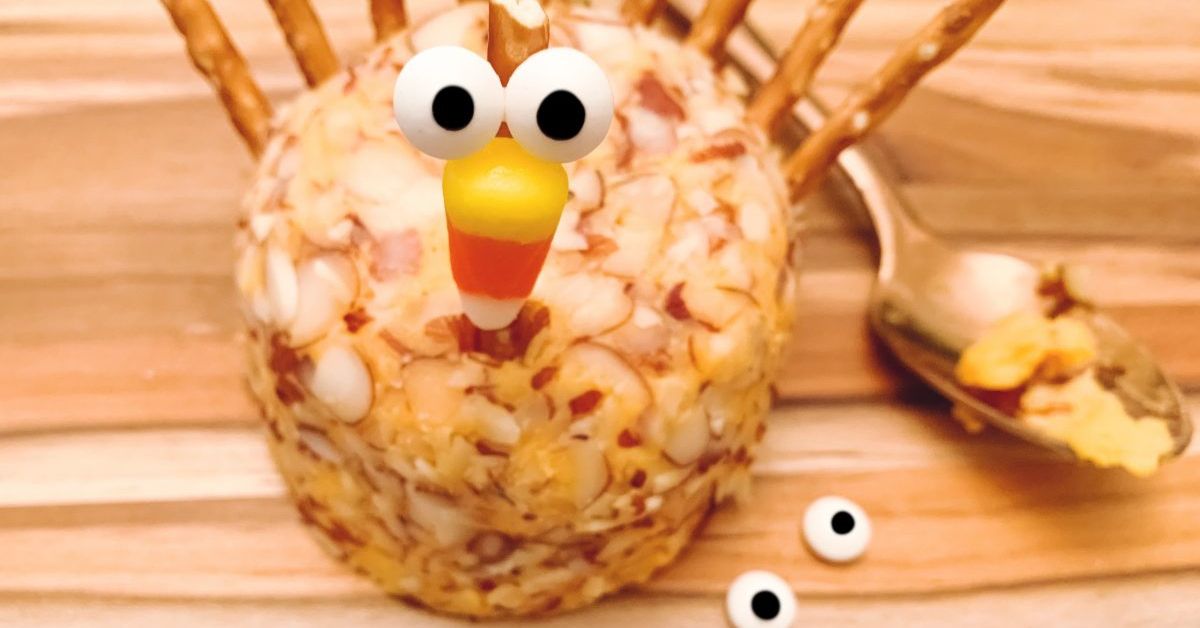Food And Drinks
The Versatile Delight: All You Need to Know About Couscous

Couscous, often regarded as a humble grain, is a culinary marvel that has transcended its origins to become a beloved staple in kitchens around the world. While its roots are deeply embedded in North African cuisine, couscous has spread across continents and cultures, becoming a versatile and nutritious ingredient that adds texture, flavor, and heartiness to a wide range of dishes. This article dives deep into the fascinating world of couscous, its history, nutritional benefits, cooking techniques, and how it continues to evolve in modern gastronomy.
The History of Couscous
Couscous originated in North Africa, particularly in regions that are now part of modern-day Algeria, Tunisia, and Morocco. For centuries, it has been a central component of Berber cuisine. Historical records show that couscous was being made and eaten as far back as the 13th century. However, its history may stretch even further into antiquity, as the exact timeline remains debated among food historians.
Traditionally, cous-cous was prepared by hand-rolling semolina wheat into small granules, which were then steamed and fluffed to perfection. Women in North African households typically made cous-cous in large quantities, preparing it for family meals, festivals, and communal gatherings. It was often served with savory stews, braised meats, and a variety of vegetables, making it a versatile and filling food for both everyday and celebratory occasions.
As North African cultures expanded and exchanged ideas with Mediterranean and Middle Eastern regions, cous-cous spread along trade routes. Today, it is enjoyed not only in North Africa but also in Europe, the Middle East, and even parts of North and South America.
Types of Couscous
Couscous comes in several varieties, each offering its own unique flavor, texture, and culinary uses. Below are some of the most popular types of cous-cous:
- Traditional Couscous: The smallest and most delicate variety, traditional cous-cous is made from semolina flour and requires minimal cooking time. It is commonly served as a side dish or the base for stews.
- Israeli Couscous: Also known as pearl cous-cous, this variety is larger than traditional cous-cous and has a chewier texture. It is often toasted before cooking, giving it a nuttier flavor that pairs well with salads and roasted vegetables.
- Lebanese Couscous: Known as Moghrabieh, Lebanese cous-cous is the largest of the cous-cous varieties. These pearls are about the size of chickpeas and are typically slow-cooked in stews, absorbing rich flavors from sauces and spices.
- Whole Wheat Couscous: A healthier alternative to traditional couscous, whole wheat couscous is made from whole wheat flour, providing more fiber and nutrients. It has a slightly nuttier taste and a denser texture, making it a popular choice for health-conscious consumers.
Nutritional Benefits of Couscous
Couscous is not only tasty but also packs a punch when it comes to nutrition. Here’s why it deserves a place in your pantry:
| Nutrient | Amount per 1 cup (cooked) | % Daily Value* |
|---|---|---|
| Calories | 176 | 9% |
| Protein | 6 grams | 12% |
| Carbohydrates | 36 grams | 12% |
| Dietary Fiber | 2 grams | 8% |
| Fat | 0.3 grams | 0% |
| Iron | 1.2 mg | 6% |
| Magnesium | 14.8 mg | 4% |
| Selenium | 43 mcg | 61% |
*Percent Daily Values are based on a 2,000-calorie diet.
- Low in Fat: Cous-cous contains almost no fat, making it a great option for those watching their fat intake. It provides a low-calorie base for rich and hearty dishes.
- Good Source of Protein: Although not as high in protein as legumes or quinoa, cous-cous still provides a decent amount of plant-based protein, making it a valuable addition to vegetarian or vegan diets.
- Rich in Selenium: One of the most notable nutrients in cous-cous is selenium. This powerful antioxidant helps protect cells from damage and supports immune function. Selenium also plays a role in thyroid health and may reduce the risk of certain chronic diseases.
- Provides Complex Carbohydrates: Cous-cous is a good source of complex carbohydrates, which release energy slowly and help maintain stable blood sugar levels. This makes it a suitable choice for maintaining sustained energy throughout the day.
- Versatile and Quick to Prepare: Cous-cous takes only a few minutes to cook, unlike grains like rice or quinoa that require longer cooking times. Its quick preparation time makes it a convenient option for busy households and professionals looking for a fast but nutritious meal.
Cooking Couscous: Tips and Techniques
Cooking cous-cous is incredibly simple, but there are a few techniques you can employ to elevate its flavor and texture. Here’s how to make the perfect cous-cous:
- Measure the Couscous and Liquid: For every cup of dry cous-cous, use one and a half cups of boiling water or broth. Using broth instead of water adds extra flavor to the final dish.
- Heat the Liquid: Bring water or broth to a boil, then remove it from the heat.
- Add the Couscous: Stir in the cous-cous, cover the pot, and let it sit for about five minutes.
- Fluff with a Fork: After the cous-cous has absorbed all the liquid, fluff it gently with a fork to separate the grains and give it a light, airy texture.
- Season and Serve: Cous-cous is like a blank canvas—it can take on the flavors of various seasonings, herbs, and spices. You can add olive oil, butter, salt, pepper, or any other flavorings that complement your dish.
Couscous in Modern Cuisine
Over the years, cous-cous has been integrated into cuisines worldwide, and chefs continue to experiment with this versatile grain. From salads to desserts, cous-cous can take on various roles in different types of dishes.
- Couscous Salads: Light and refreshing cous-cous salads have become a popular option for picnics and summer meals. They are typically mixed with chopped vegetables, herbs, nuts, and dressings like lemon vinaigrette or tahini sauce. These salads are not only tasty but also packed with nutrients.
- Stuffed Vegetables: Cous-cous is often used as a filling for stuffed vegetables, such as peppers, zucchini, and tomatoes. Mixed with spices, vegetables, and sometimes meat, the cous-cous expands and soaks up the flavors during cooking.
- Couscous Desserts: In Moroccan cuisine, cous-cous is occasionally used in sweet dishes. Prepared with milk, cinnamon, and dried fruits, it can be transformed into a warm, comforting dessert.
- One-Pot Cous-cous Dishes: Cous-cous is perfect for one-pot meals, where it can absorb the flavors of spices, meats, and vegetables all in one dish. This makes it an excellent choice for easy, flavorful weeknight dinners.
Couscous vs. Other Grains
While cous-cous is often compared to grains like rice or quinoa, it has its own set of unique properties. Unlike rice, which is a whole grain, cous-cous is a form of pasta made from semolina wheat. It is much smaller and cooks faster than both rice and quinoa. Quinoa, on the other hand, is higher in protein and contains all nine essential amino acids, making it a complete protein. Despite these differences, cous-cous holds its own as a nutritious and versatile option in the kitchen.
Conclusion
Couscous may be a simple dish at first glance, but its versatility, nutritional benefits, and rich history make it a global culinary treasure. Whether you’re whipping up a quick weeknight meal, creating a gourmet salad, or serving a hearty stew, cous-cous adapts beautifully to a wide range of flavors and textures. Incorporating cous-cous into your diet not only brings a delicious variety to your meals but also adds valuable nutrients that can support your overall health. So, next time you’re looking for a wholesome, quick, and adaptable ingredient, reach for cous-cous—it’s a little grain with a lot of potential.
Food And Drinks
Peach Cocktails: 10 Refreshing Recipes & Expert Mixology Tips

Ever wondered why peach cocktails are the ultimate crowd-pleasers? Whether it’s the juicy sweetness, vibrant color, or versatility in mixing, peaches bring a summery charm to any drink. From timeless classics like the Bellini to modern twists like the Peach Bourbon Smash, these cocktails are perfect for brunch, parties, or lazy afternoons by the pool.
In this guide, we’ll explore:
✅ 10 must-try peach cocktail recipes (with easy steps)
✅ Pro tips from bartenders for the best flavor
✅ The best peach liqueurs & spirits to stock up on
✅ Creative variations to impress your guests
Let’s dive in and shake up some delicious peachy concoctions!
Why Peach Cocktails? The Secret Behind Their Popularity
Peaches aren’t just delicious—they’re mixology gold. Here’s why:
-
Natural sweetness reduces the need for excess sugar.
-
Balanced acidity pairs well with spirits like bourbon, and prosecco.
-
Seasonal flexibility—use fresh peaches in summer or preserves in winter.
According to bartender Jamie Reynolds (The Craft Cocktail Handbook), “Peaches add a lush, velvety texture to drinks that few fruits can match.”
10 Irresistible Peach Cocktail Recipes
1. Classic Peach Bellini
The OG brunch cocktail! Originating in 1940s Venice, this sparkling delight is simplicity at its best.
Ingredients:
-
2 oz peach purée (fresh or canned)
-
4 oz chilled prosecco
-
Optional: ½ oz peach schnapps for extra punch
Method:
-
Pour peach purée into a flute.
-
Top with prosecco and stir gently.
-
Garnish with a peach slice.
Pro Tip: Freeze peach purée into ice cubes for a slushier version!
2. Peach Bourbon Smash
A Southern favorite with a fruity kick.
Ingredients:
-
2 oz bourbon
-
1 oz fresh lemon juice
-
½ oz honey syrup
-
3 peach slices (muddled)
-
Mint leaves for garnish
Method:
-
Muddle peaches in a shaker.
-
Add bourbon, lemon juice, and syrup.
-
Shake with ice, strain into a rocks glass, and garnish.
Bartender’s Twist: Swap bourbon for rum for a tropical vibe.
3. Fuzzy Navel (A Nostalgic Sip)
The 80s called—they want their cocktail back (but better).
Ingredients:
-
1.5 oz peach schnapps
-
4 oz fresh orange juice
-
Splash of soda (optional)
Method:
-
Fill a highball glass with ice.
-
Add schnapps and OJ, then stir.
-
Top with soda for fizz.
Upgrade It: Add a shot of vodka to make it a “Hairy Navel.”
*(Continue with 4-10 more recipes, such as Peach Margarita, Peach Mojito, Peach Sangria, etc.)*
Expert Tips for the Perfect Peach Cocktail
-
Choose Ripe Peaches – Look for fragrant, slightly soft fruit.
-
Make a Peach Syrup – Simmer equal parts sugar, water, and diced peaches for a versatile mixer.
-
Infuse Your Spirits – Soak peach slices in vodka or bourbon for 3-5 days.
-
Control Sweetness – Balance with citrus (lemon/lime) or herbal notes (basil, thyme).
Best Peach Liqueurs & Spirits
-
Archers Peach Schnapps – A staple for sweet cocktails.
-
Giffard Pêche de Vigne – A premium choice for complex flavors.
-
Buffalo Trace Bourbon – Pairs perfectly with peach in smashes.
Final Sip: Why You Should Mix Peach Cocktails Today
Peach cocktails are easy, adaptable, and always refreshing. Whether you’re hosting a party or just craving something sweet, these drinks deliver. Which one will you try first?
Pro Move: Batch-make a peach sangria for your next gathering—it’s a guaranteed hit!
Food And Drinks
The Turkey Cheese Ball: A Festive Appetizer for Any Occasion

Why Is the Turkey Cheese Ball the Perfect Party Starter?
Imagine a creamy, savory cheese ball shaped like an adorable turkey, complete with pretzel feathers and a cute edible face. It’s not just delicious—it’s a showstopper! Turkey cheese balls have become a must-have at holiday gatherings, game-day parties, and even casual get-togethers.
But what makes them so irresistible? Is it the rich blend of cream cheese, cheddar, and spices? The fun, festive presentation? Or the fact that they’re incredibly easy to make?
In this guide, you’ll learn:
✅ How to make the best turkey cheese ball (with expert tips)
✅ Creative variations to wow your guests
✅ Step-by-step shaping and decorating tricks
✅ Make-ahead and storage hacks
Let’s dive in!
What Is a Turkey Cheese Ball?
A turkey cheese ball is a festive twist on the classic cheese ball appetizer. Instead of a plain round shape, it’s molded to resemble a turkey, often decorated with crackers, pretzels, nuts, or veggies for feathers, eyes, and a beak.
Why You’ll Love It
✔ Easy to customize – Use your favorite cheeses and toppings.
✔ Great for holidays – Perfect for Thanksgiving, Christmas, or Friendsgiving.
✔ Kid-friendly – A fun project for little helpers.
✔ Crowd-pleaser – Always disappears fast at parties!
How to Make the Best Turkey Cheese Ball (Step-by-Step)
Ingredients You’ll Need
-
16 oz cream cheese (softened)
-
1 ½ cups sharp cheddar cheese (shredded)
-
½ tsp garlic powder
-
½ tsp onion powder
-
½ tsp smoked paprika
-
¼ tsp black pepper
-
1 cup pecans or almonds (finely chopped, for coating)
-
Decorations: Pretzel sticks, crackers, baby carrots, olives, or peppercorns
Step 1: Mix the Cheese Base
-
In a large bowl, beat the cream cheese until smooth.
-
Add shredded cheddar, garlic powder, onion powder, smoked paprika, and black pepper. Mix well.
-
Cover and refrigerate for 30 minutes to firm up.
Pro Tip: For extra flavor, add crumbled bacon, dried cranberries, or a splash of hot sauce!
Step 2: Shape the Turkey
-
Divide the mixture into two parts: one large (for the body) and one small (for the head).
-
Roll the larger portion into a ball, then slightly flatten the bottom so it sits upright.
-
Roll the smaller portion into a ball for the head and attach it to the body.
Step 3: Coat & Decorate
-
Roll the entire cheese ball in chopped nuts for a “feathered” look.
-
Insert pretzel sticks or crackers at an angle to create tail feathers.
-
Use olives or peppercorns for eyes and a baby carrot or bell pepper for the beak.
Pro Decorating Tip: Use different-colored crackers (like multigrain or veggie chips) for a vibrant tail!
5 Creative Variations to Try
1. Buffalo Turkey Cheese Ball
-
Add ½ cup hot sauce and ½ cup crumbled blue cheese for a spicy kick.
-
Coat in crushed pretzels for extra crunch.
2. Cranberry-Pecan Turkey
-
Mix in ½ cup dried cranberries for a sweet-tart flavor.
-
Roll in chopped pecans for a festive touch.
3. Ranch & Bacon Turkey
-
Stir in 1 tbsp ranch seasoning and ½ cup cooked bacon bits.
-
Coat with crushed crackers for extra savory goodness.
4. Dessert Turkey Cheese Ball
-
Use 8 oz cream cheese + ½ cup powdered sugar + 1 tsp vanilla.
-
Roll in crushed graham crackers or sprinkles for a sweet twist.
5. Vegan Turkey Cheese Ball
-
Substitute vegan cream cheese & dairy-free cheddar.
-
Coat in sunflower seeds or crushed nuts.
Expert Tips for the Perfect Cheese Ball
✔ Use room-temperature cream cheese – Ensures a smooth, lump-free texture.
✔ Chill before shaping – Makes it easier to mold.
✔ Get creative with decorations – Use veggies, crackers, or even edible candy eyes.
✔ Make ahead – Prep up to 2 days in advance (store wrapped in plastic).
FAQs About Turkey Cheese Balls
Can I Freeze a Cheese Ball?
Yes! Wrap tightly in plastic and freeze for up to 1 month. Thaw in the fridge before serving.
What Can I Serve With It?
-
Crackers
-
Sliced baguette
-
Veggie sticks
-
Pita chips
How Long Does It Last?
Up to 5 days refrigerated (if it lasts that long!).
Final Thoughts: Your New Go-To Party Appetizer
A turkey cheese ball isn’t just food—it’s an edible centerpiece that sparks joy and conversation. Whether you stick to the classic recipe or try a bold variation, this appetizer is guaranteed to impress.
Ready to make your own? Gather your ingredients, follow these simple steps, and watch your guests gobble it up (pun intended)!
Food And Drinks
Beach Drinks: Cocktails & Mocktails for Your Next Getaway

What’s better than sipping a cold, fruity drink with your toes in the sand? Whether you’re lounging under an umbrella or hosting a family-friendly beach picnic, the right drink can make your seaside experience even more enjoyable. From tropical coconut blends to zesty citrus coolers, we’ve rounded up the best beach-friendly mocktails to keep you refreshed all day long.
Why Beach Drinks Taste So Good
There’s something magical about enjoying a drink by the ocean. The salty breeze enhances sweet and tangy flavors, while the sunshine makes icy, fruity sips even more satisfying. Research from the Flavour Journal suggests that outdoor settings heighten our senses, making every sip more vibrant and enjoyable.
The best beach drinks are:
✅ Light & hydrating (perfect for sunny days)
✅ Easy to make (no fancy equipment needed)
✅ Visually appealing (bright colors for Instagram-worthy moments)
Ready to mix up some delicious drinks? Let’s dive in!
Top 5 Fruity Beach Mocktails
1. Tropical Pineapple Coconut Cooler
Creamy, sweet, and ultra-refreshing—this drink tastes like vacation in a glass.
Recipe:
-
1 cup pineapple juice
-
½ cup coconut milk
-
½ cup sparkling water
-
Ice
Mix all ingredients, garnish with pineapple slices.
Pro Tip: Freeze pineapple chunks to use as edible ice cubes!
2. Watermelon Lime Agua Fresca
Juicy, light, and naturally sweet—perfect for hot days.
Recipe:
-
4 cups cubed watermelon
-
1 lime (juiced)
-
1 cup cold water
-
Mint leaves for garnish
Blend watermelon and water, strain, add lime juice, and serve over ice.
3. Mango Ginger Fizz
A tropical twist with a spicy kick.
Recipe:
-
1 cup mango puree
-
½ cup ginger beer
-
½ lime (juiced)
-
Sparkling water
Mix mango puree and lime juice, top with ginger beer and sparkling water.
4. Berry Hibiscus Iced Tea
A floral, antioxidant-rich refresher.
Recipe:
-
2 cups brewed hibiscus tea (cooled)
-
½ cup mixed berries
-
1 tbsp honey
-
Ice
Combine all ingredients, muddle berries slightly, and serve chilled.
5. Citrus Sunrise Spritzer
A vibrant, layered drink that’s as pretty as it is tasty.
Recipe:
-
½ cup orange juice
-
¼ cup grenadine
-
Sparkling water
-
Ice
Fill a glass with ice, pour orange juice, top with sparkling water, and slowly add grenadine for a sunrise effect.
Top 5 Hydrating & Healthy Beach Drinks
1. Coconut Lime Hydrator
Electrolytes + hydration = beach-day essential.
Recipe:
-
1 cup coconut water
-
½ lime (juiced)
-
Fresh mint
Mix and serve over ice.
2. Cucumber Mint Cooler
Crisp, cooling, and ultra-light.
Recipe:
-
½ cucumber (sliced)
-
1 cup sparkling water
-
5 mint leaves
-
1 tsp honey
Muddle cucumber and mint, add honey and sparkling water.
3. Green Goddess Smoothie
A nutrient-packed sip for an energy boost.
Recipe:
-
1 banana
-
1 cup spinach
-
½ cup pineapple juice
-
½ cup coconut water
Blend until smooth.
4. Iced Matcha Lemonade
A refreshing twist on classic lemonade.
Recipe:
-
1 tsp matcha powder
-
1 cup cold water
-
½ lemon (juiced)
-
1 tsp honey
Whisk matcha with water, add lemon and honey, pour over ice.
5. Sparkling Peach Basil Lemonade
Sweet, herbal, and bubbly.
Recipe:
-
½ cup peach puree
-
1 cup lemonade
-
Sparkling water
-
Fresh basil
Mix peach puree and lemonade, top with sparkling water, garnish with basil.
Beach Drink Hacks: Pro Tips
✔ Freeze fruit chunks (instead of ice) to avoid watered-down drinks.
✔ Use reusable silicone cups (eco-friendly and stylish).
✔ Pre-mix drinks in mason jars for easy transport.
Final Splash: Sip, Savor, and Stay Refreshed
The best beach drinks are all about fresh flavors, vibrant colors, and easy sipping. Whether you love fruity blends, herbal infusions, or hydrating coconut sips, there’s a perfect mocktail for every beach day.
-

 Articles3 months ago
Articles3 months agoHow Many Times Can You Regrow Green Onions
-

 News10 months ago
News10 months agoUnderstanding HotLeaks: What You Need to Know
-

 Fashion8 months ago
Fashion8 months agoOpals in the USA: A Gemstone Transforming the Crystal Healing Market
-

 Entertainment7 months ago
Entertainment7 months agoHow to Use Snaptik: A Complete Guide to Download TikTok Videos
-

 Technology1 year ago
Technology1 year agoThe Wonders of Oh Em Gee Blog
-

 Entertainment1 year ago
Entertainment1 year agoBare it All: Unforgettable Skinny Dipping Stories Shared
-

 Health1 year ago
Health1 year agoCan You Smoke Shrooms? Exploring the Myths and Realities
-

 Articles5 months ago
Articles5 months agoWHAT IS THE DIFFERENCE BETWEEN SEED GARLIC AND FOOD GARLIC?
